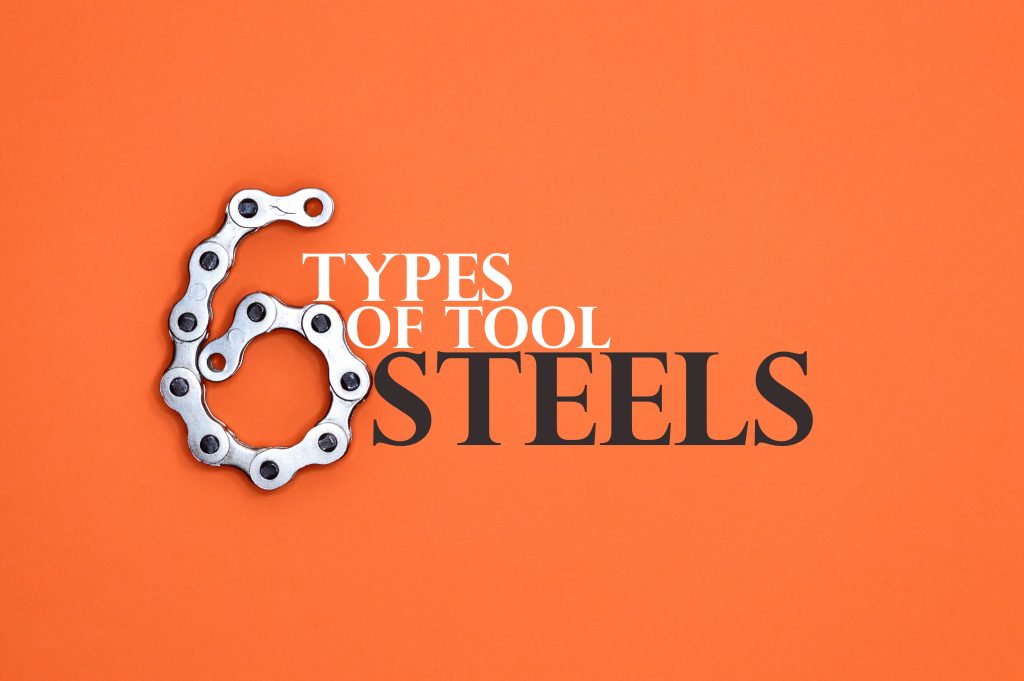What are the 6 Types of Tool Steels?
What are the 6 Types of Tool Steels? Tool steels are the unsung heroes of the manufacturing world, providing the backbone for countless tools and machines that we rely on daily. From drill bits to dies and molds, tool steels play a pivotal role in shaping the products we use. In this comprehensive guide, we’ll delve into the world of tool steels and explore the six primary types that are essential for various industrial applications.
Introduction
What are the 6 Types of Tool Steels?
Tool steels are a family of versatile materials designed to withstand the extreme demands of machining, cutting, and shaping processes. Their unique properties make them indispensable in industries such as aerospace, automotive, and manufacturing. Let’s embark on a journey to uncover the six essential types of tool steels and understand their distinct characteristics.
What Are Tool Steels?
Tool steels are a category of high-strength, wear-resistant steels tailored for use in various cutting, drilling, and forming applications. Unlike standard steel, tool steels are specifically engineered to endure elevated temperatures, high stress, and abrasive wear. They are celebrated for their exceptional hardness, toughness, and resistance to deformation.
The Importance of Tool Steels
The significance of tool steels in modern industrial processes cannot be overstated. They are the backbone of precision machining and manufacturing. Without these specialized materials, tasks like milling, stamping, and extrusion would be impossible to execute with precision and reliability.

Classification of Tool Steels
4.1. High-Speed Tool Steels (HSS)
High-Speed Tool Steels, commonly known as HSS, are engineered for cutting and drilling applications at high speeds. They can maintain their hardness even at temperatures of up to 600°C, making them ideal for tasks that generate intense heat.
4.2. Carbon Tool Steels
Carbon tool steels are renowned for their high carbon content, which provides exceptional hardness and wear resistance. They are commonly used for making chisels, blades, and hand tools.
4.3. Alloy Tool Steels
Alloy tool steels incorporate elements like chromium, vanadium, and tungsten to enhance their properties. They strike a balance between hardness and toughness, making them suitable for applications requiring both.
4.4. Shock-Resisting Tool Steels
Shock-resisting tool steels are designed to withstand impact and shock loads. They find extensive use in manufacturing components subject to heavy pounding or hammering.
4.5. Hot-Work Tool Steels
Hot-work tool steels excel in high-temperature environments. They maintain their strength and hardness even when exposed to extreme heat, making them indispensable for forging and die-casting processes.
4.6. Cold-Work Tool Steels
Cold-work tool steels, on the other hand, are tailored for low-temperature applications. They retain their toughness and sharpness in cold conditions, making them ideal for tasks like cold forming and precision cutting.
Properties and Characteristics
Tool steels share some common characteristics, including high hardness, excellent wear resistance, and the ability to maintain their shape and performance under extreme conditions. These properties make them dependable and long-lasting.
Applications
The versatility of tool steels is reflected in their wide-ranging applications. They are used in the production of cutting tools, dies, molds, and various machine components. Tool steels are the unsung heroes behind many everyday products, from the car you drive to the appliances in your home.
Selection and Maintenance
Choosing the right tool steel for a specific application is crucial. Factors like the type of material being worked on, the temperature of the operation, and the desired tool life must all be considered. Proper maintenance, including sharpening and tempering, is also vital to prolong the life of tool steels.
Comparative Analysis
To understand the differences between tool steels better, let’s conduct a comparative analysis of their properties and applications.
- High-Speed Tool Steels vs. Carbon Tool Steels
- Alloy Tool Steels vs. Shock-Resisting Tool Steels
- Hot-Work Tool Steels vs. Cold-Work Tool Steels
Conclusion
In conclusion, tool steels are the unsung heroes of modern manufacturing and machining. Their unique properties and versatility make them indispensable in various industries. Understanding the six primary types of tool steels and their applications is vital for anyone involved in the world of manufacturing and metalworking.
FAQs
10.1. What distinguishes tool steels from other steel types?
Tool steels are specifically designed for applications that require high hardness, wear resistance, and the ability to maintain their shape at elevated temperatures. This sets them apart from other steel varieties.
10.2. Are tool steels prone to corrosion?
Most tool steels have low corrosion resistance due to their high carbon content. However, proper maintenance and storage can help mitigate corrosion.
10.3. How do I choose the right tool steel for my application?
The choice of tool steel depends on factors such as the material being worked on, the operating temperature, and the desired tool life. Consulting with a materials expert is advisable.
10.4. Can tool steels be recycled?
Yes, tool steels can be recycled. They are typically melted down and reprocessed to create new tool steel products.
10.5. Are there any environmentally friendly alternatives to tool steels?
While tool steels remain the go-to choice for many applications, ongoing research is exploring greener alternatives that maintain high performance while being more eco-friendly. However, these alternatives are still in the developmental stage.




Leave a comment